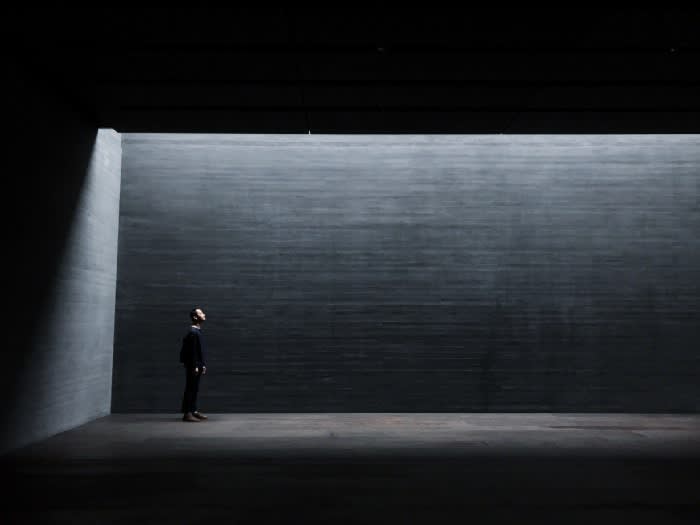
THIS EPISODE, ORA-ORA VISITS HONG KONG ARTIST SZELIT CHEUNG'S STUDIO, AS HE REFLECTS ON HIS JOURNEY AS A LOCALLY BASED ARTIST.
Odetti Tse as Odetti
Szelit Cheung as Szelit
Odetti: I’m very happy to be visiting your studio today. I have always loved going to different artists’ studios. It is a very rare opportunity to be able to have a behind-the-scenes view of an artist’s creative process and working environment.
Szelit: Hello, everyone! I am Cheung Szelit. I specialise in oil painting, pencil sketching, and multimedia photography work. My artworks typically explore the relationship between presence and emptiness utilising simple forms, colour, and light.
Odetti: Did you already know you were going to be an artist when you were a child?
Szelit: When I was really young, I loved painting and drawing. It was a very compelling hobby for me. I was fortunate enough to have a good art teacher when I was in secondary school. He gave me a lot of insight on drawing techniques and theories and introduced me to the concept of being an artist. It was at that time that I started thinking whether I could turn my passion into a career. It started this way.
Odetti: You went on to university after graduating from secondary school. It seems that you were very clear about what you wanted to do. Did you know you would want to commit to studying art in university? You studied in RMIT.
Szelit: The most challenging part of the whole process was learning to face yourself. At school, you have teachers who would guide you and give you good advice and help you develop your work. You no longer have all these when you graduate. You are responsible for every step of the creative process. You would have to think by yourself, to find your own direction, and to develop your own work. When there is no one with you in this daunting process, it’s very easy to feel disoriented and helpless. I did, for some time, doubt my abilities and my confidence in myself wavered. I feel like a lot of artists have had experienced this stage in their lives. However, I do believe that this is a rite of passage. As the Chinese saying goes, we need to “cross the river by feeling the stones.” This is a way for us to grow and develop as artists. Throughout the process, you can gain new knowledge and see things in a different light, which would allow yourself to develop the necessary skills to solve your own problems. If you didn’t tackle this problem properly, it would be very hard for you to continue with your path. Once you get more practice, you would know what you really wanted to do.
In Hong Kong, you have to accept the reality. In my opinion though, “reality” can be an element in my own artworks. When I was finding part-time work in university, I would make sure that my jobs were art-related. My fascination with biaohua began when I was at university. I did 2-D drawings most of the time, but framing paintings is an important part of my work. A good frame can accentuate the beauty of a painting and make it feel more complete. I started to frame my own paintings. My artist friends, knowing that I have framing skills, will ask me to help them with it. They tend to come to me for help because I am an artist as well. They know I can help them frame their paintings using an artist’s perspective. From what I know, most handymen who frame paintings out there are not trained in art.
Odetti: Other than framing, you also teach art.
Szelit: Yes, I believe I have been teaching for around 20 years already, having started my teaching career in 2010. I have taught painting in art schools, I have also had the opportunity to teach the mentally handicapped and the elderly at Tung Wah Group facilities. These new experiences all have had a profound impact in my life. I have been teaching a very elderly student recently which had to take a pause because of the pandemic. He is my oldest student, and he is 105 years old. He is in a wheelchair and his hand shakes when he draws. But I can clearly see his passion and determination. He is very proactive and knows what he wants. I feel inspired by him and I can feel both our creative juices flowing when we paint.
Odetti: You have four artworks that you would like to show us that represent you as an artist.
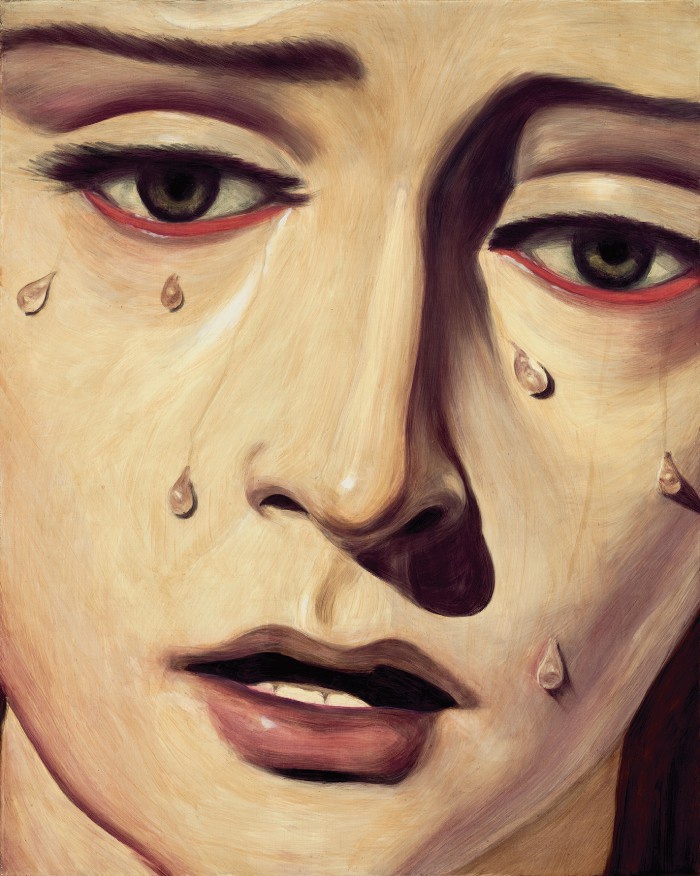
Image: Szelit Cheung’s Artwork — Mercy (Image courtesy of Ora-Ora and the artist)
Szelit: This is a portrait of a weeping Virgin Mary. I like to observe religious sculptures when I visit churches or museums, I love their facial structures and the various emotions they convey. I especially love sculptures like the crying Virgin Mary. You can see clearly the light reflecting off of the tears, the tears are sparkling, signifying hope. At the same time, her facial expression is mournful. There is a strong sense of conflict and tension between the feelings of hope and pessimism. I wanted to present this kind of feeling through my artwork. This artwork directly affected my works that follow. It made me want to create artworks that can tug at the audience’s heartstrings and can make them reflect and think.
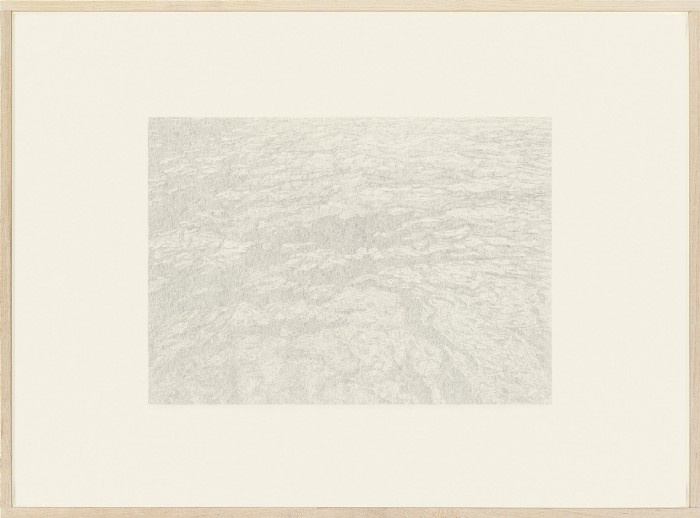
Szelit: This work was presented at Galerie Ora Ora’s 16.52 Sqm Open Sea exhibition at the end of 2018. I was invited by the curator to showcase my artwork. As the theme of the exhibition was “sea”, I started to think about what the sea meant to me. I did a lot of research, I explored the meaning of the sea through studying literature, films and music. I realised I was attracted to the sea’s texture, especially the space where the water and air touches and connects. If you look closely, you can see the thin brushstrokes where I painted in a top to bottom motion. You can see multiple layers on this painting, and you can see the white spaces in between. The more layered it is, the darker it gets. The repetitive layering is similar to using a scanner. I felt like scanning the surface of the sea. When I was painting, I had a photo of the sea next to my drawing. I only focused on one small part of the painting as I drew. Only when I was finished with the painting was I able to finally see the whole sea. The whole process is just like scanning things. Each artwork has to undergo a long and arduous developmental process. I rarely know what the outcome would look like at the very start of the process. From my experience, if I knew what I was doing from the start, the outcome would not look great. You have to take a lot of steps to get to the final outcome of your work. Why do I use pencils? I like the effect penciling has and I also like the message behind a pencil. The pencil is a very primitive, traditional tool. Only it can convey a traditional, primitive kind of feeling and I wanted to use the pencil to express this feeling I have about the sea.
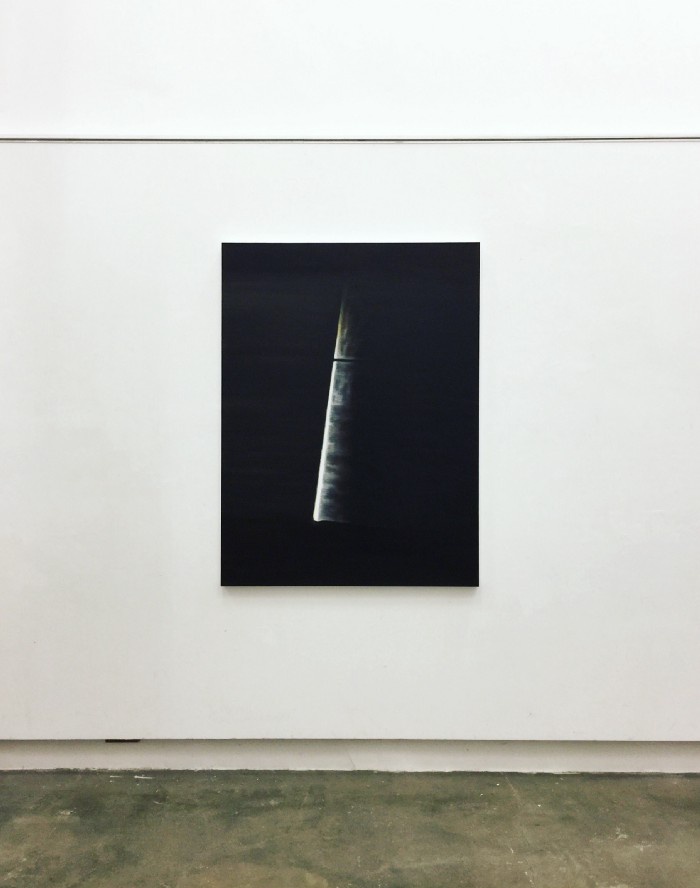
Szelit: This is also an artwork I did at the end of 2018. I was invited by the House of Literature to present an exhibition about Chinese medicine. They chose an artist and a writer for each theme, and there were nine themes in total. I was chosen to work on the theme “warmth” and was paired with the author Yesi. I chose a poem entitled “White Congee” as my source of inspiration as I was touched by the poem. White congee is a bland, common, and down-to-earth kind of food. But when you feel sick, this is exactly the type of food you need. This got me thinking whether there are things in real life that has the same meaning and effect as white congee. I looked back into the photographs I took and the literary research I had undertaken and realised I have taken lots of photos of light rays in my art studio. The light has a similar effect as white congee. Living in such a congested space and working long hours can make one feel burdensome and tired. But when you see some light, you would feel comforted and relaxed. The white congee and light rays are similar in this way. Light is also a very unspectacular thing, like water and air, it is not noticeable but you need it for your existence. I wanted to use the emotion conveyed by light as the foundation of my artwork. The light you see here is a result of my experimenting in the studio. I tested using the light from a projector and the refraction of light from glass and other materials. This artwork meant a lot to me. It is like a seed.
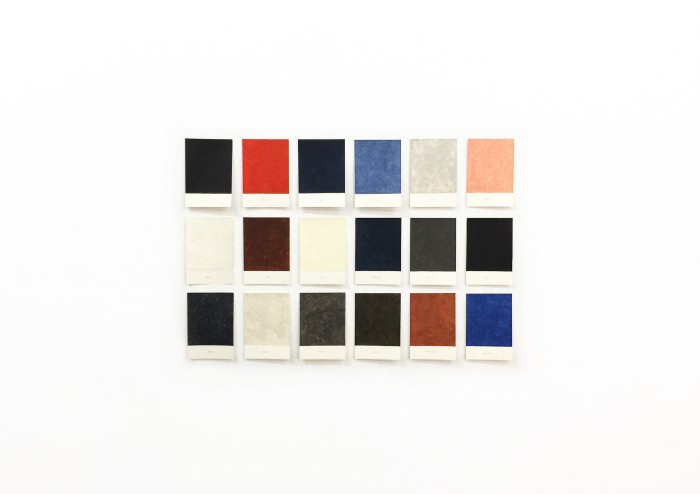
Szelit: I started making this when I moved into this studio around two to three years ago. I did not expect it to become an artwork. I was feeling quite lost and directionless at that point in my life and I was not sure what I wanted to do, so I just started mixing different paints and colours as an experiment. After a period of time, I contemplated layering colours and giving meaning and structure to the work. After two years, I finally decided on the format I would like to present my work. At the end, I wanted to explore the relationship between colours and emotions. When we first look at a painting, we pay attention to its colours. I would like to extract this feeling and input it in my work by assigning a feeling to each colour. I thought about doing 1000 of these. I assigned a feeling to each colour and vice versa. I put all these colours on the walls. When you step in this space, you immediately feel embraced by all these different colours and these colours all belong to me and represent me. Ultimately, I wanted to complete a Pantone that completely belongs to me, Cheung Szelit.
Odetti: What do you see in your future? Do you have any more goals and dreams?
Szelit: I wish to continue to pursue my passions and be focused in creating more art.
Odetti: I agree, this is very important.
Szelit: Yes. Even though these days can get very difficult, I would still want to take the time to equip myself so that I would be able to face any challenges in the future.
Odetti: You are a very prolific artist. You have had exhibitions in Hong Kong, mainland China and Taiwan. Recently, you had an exhibition in the United States as well.
Szelit: Yes, in Miami late last year.
Odetti: Do you have goals for your future as an artist?
Szelit: I just want to be more focused in doing my work. Only when you are focused can you develop your skills. There are a lot of things in life that I have become more certain about.
Odetti: So your values and perceptions have changed.
Szelit: Yes, I have matured and have developed more insight. I would like to present myself to the audience in a new light — to show them I have become more introspective, and more unique. When you feel dejected or you want to give up, think about why you started. This may give you a new perspective.
Odetti: You spent a lot of time and effort in curating your Instagram profile. As an increasingly popular tool for artists, what do you think of this trend where artworks are put online all the time? What are your thoughts and feelings on this?
Szelit: I think that the Internet can be a very helpful platform for artists to promote themselves. This is especially so for artists who are not especially talented in socialising or whose works are rarely seen or exhibited. On the Internet, you have greater opportunities to showcase your work, to sell your art, and communicate with other artists in the world. The Internet also allows people to learn more about you and about your art.
If you have chosen to do art and if you are firm in your belief, you are actually very lucky. There are a lot of people in the world who lived their whole lives not knowing what they want to do. If you have decided you would like to work in art, you have to work hard. You need to try and absorb new knowledge every day, make good use of your time, don’t allow yourself to have any regrets and never give up. You have to stay strong and persevere. I believe great things will happen to you if you are willing to persevere. As long as you can improve yourself bit by bit every day, I am sure you can be a very powerful person in the future.
ABOUT ORA-ORA LIVE
Each week, Ora-Ora will speak with various members of the art community - including artists, curators, academics and other professionals working in the cultural sector - to address topics of interest related but not limited to Hong Kong's art and cultural scene. The series aims to be an outlet for creativity and a means to connect with peers who share similar interests. The episodes will also available live on Ora-Ora's Instagram (@galerieoraora), Facebook (Galerie Ora-Ora) and later on Ora-Ora's YouTube channel.
